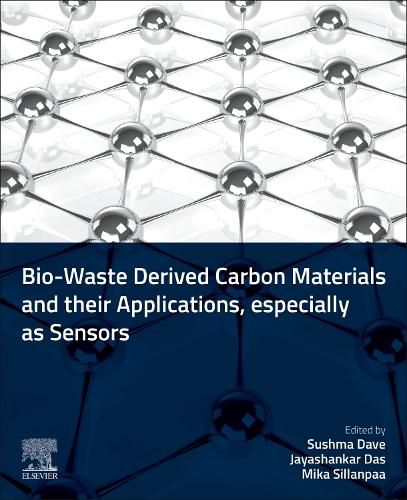Readings Newsletter
Become a Readings Member to make your shopping experience even easier.
Sign in or sign up for free!
You’re not far away from qualifying for FREE standard shipping within Australia
You’ve qualified for FREE standard shipping within Australia
The cart is loading…






Bio-waste-derived Carbon Materials and their Applications Especially as Sensors highlights the role of carbon nanomaterials as bio-(sensors) in several fields, presenting key achievements to date in the areas of biosensor-based diagnostics and environmental applications. The book brings together the knowledge of key researchers from different areas of biosensors research, including an explanation of biomass carbonization by pyrolysis and hydrothermal methods, and its use as a cost-effective strategy for fabrication of electrodes for biosensing applications, along with a comparison of synthetic and bio-derived carbon materials and discussion of various techniques used to improve the surface properties of carbon nanomaterials to enhance the electrocatalytic behaviour of working electrodes. The book highlights the promising technology of biosensors in the field of health care and the environment and explains the methods available, presenting current strategies and future perspectives for bio-(sensor) based diagnosis using carbon materials as sensing materials.
$9.00 standard shipping within Australia
FREE standard shipping within Australia for orders over $100.00
Express & International shipping calculated at checkout
Bio-waste-derived Carbon Materials and their Applications Especially as Sensors highlights the role of carbon nanomaterials as bio-(sensors) in several fields, presenting key achievements to date in the areas of biosensor-based diagnostics and environmental applications. The book brings together the knowledge of key researchers from different areas of biosensors research, including an explanation of biomass carbonization by pyrolysis and hydrothermal methods, and its use as a cost-effective strategy for fabrication of electrodes for biosensing applications, along with a comparison of synthetic and bio-derived carbon materials and discussion of various techniques used to improve the surface properties of carbon nanomaterials to enhance the electrocatalytic behaviour of working electrodes. The book highlights the promising technology of biosensors in the field of health care and the environment and explains the methods available, presenting current strategies and future perspectives for bio-(sensor) based diagnosis using carbon materials as sensing materials.